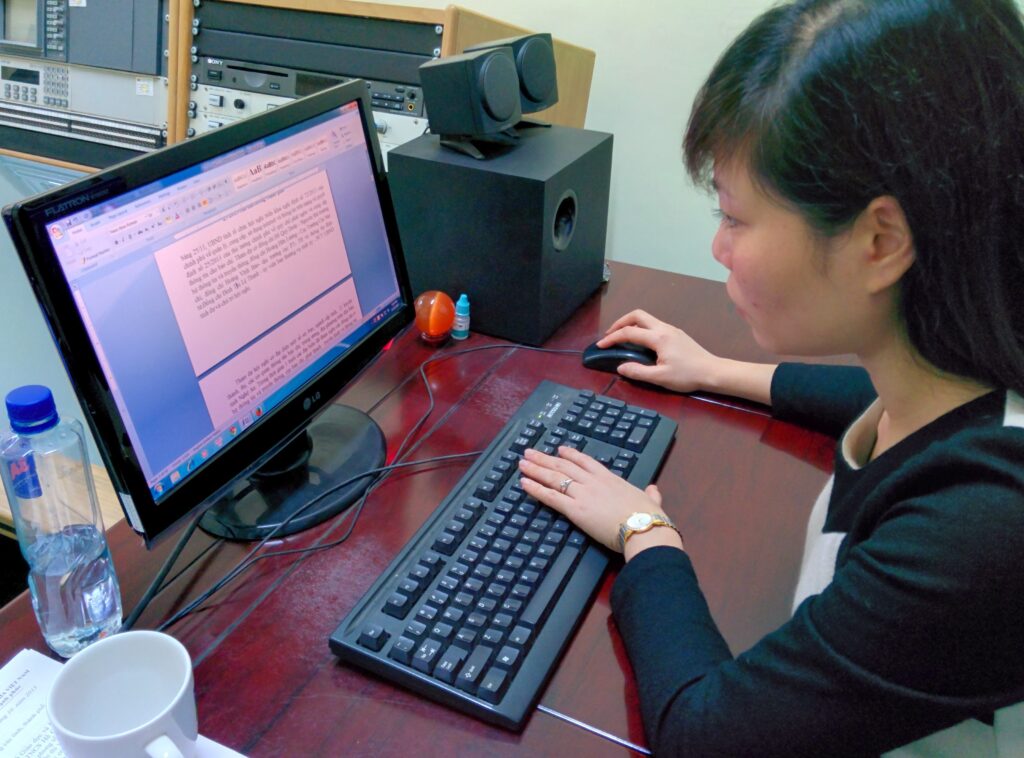
Journalists working on a news website are responsible for publishing content on every device their users to turn to in order to access information.
This article was written for online journalists working for the online operation at a newspaper in Vinh, Vietnam.
This makes perfect business sense. And exploiting existing resources to their maximum in an intelligent and meaningful way is the way forward.
Of course a lot depends on available editorial resources, newsroom systems and whether journalists are able to access the assets needed to create an online news story.
The following notes are based on experiences gathered working on large-scale broadcast news websites.
They cover the elements you should be thinking about adding to a breaking news story as it develops.
They also sets out some rough timings, which will vary depending on whether you:
- are operating in a converged news organisation
- have centralised journalistic tools that make all the assets/elements available
- belong to a media organisation with audio/video
- have a website that aims to update around the clock
- deliver content to multiple devices.
It will also make life easier if your news organisation has:
- a strong forward planning operation
- a core editorial proposition based on issue-led journalism.
As soon as news breaks, you need to display the information on the home page of your site. This might be in the form of one line of text.
The first information you receive might come from the news wires. If that is the case, and if you have not been able to verify the details independently, you must qualify the information you are publishing with words such as “According to the wires…”. See our attribution module.
Now you need to find a second source in order to verify the information. Ideally that will be one of your own correspondents or reporters but, failing that, another source will needed.
You will also need to make calls, search online and scour the social networks for updates, adding information as appropriate once verified. You will be looking for something unique, perhaps a quote, image or audio clip from your own news resources – ideally within the next 10 minutes.
By now you should have a headline, a summary and a couple of paragraphs. You might even have an image or a video. Publish what you have and add the words “more soon” to indicate you are still working on the piece. This will encourage the reader to return for an update.
Add a quote box as soon as you find a good quote. Your content management system (CMS) might have tools for doing this but, if it doesn’t, create a small table in your text editor, add a border and write the quote inside.
This breaks up the text and helps highlight an important element of the breaking news story. Always go for the most newsworthy quote in the story.
Fact boxes are ideal for displaying other important elements of the story. You might want to add the main facts as bullet points. All this can be done by creating a table and inserting it in the piece.
If you have a good CMS, and a database stocked with previous news items and other background information on the topic, you should be able to search for previously created elements such as timelines, fact boxes and people profiles.
Free tools for enriching content
There are some useful free tools for adding interactive timelines and maps to text stories. Search online for the options.
The beauty of these free online tools is that, once published, your creations can be shared by others who can embed your timelines and maps in their blogs and on their social networks. This all helps with the distribution of your information and encourages others to visit your site.
Multimedia
They say pictures are sometimes worth a thousand words. Sometimes they help to break up text. Graphics may illustrate a technical or complicated concept more easily than a written explanation.
Video and audio clips may also be incorporated in your news pages; these can add life, colour and realism. But try to summarised what the viewer/listener is likely to hear with a well-written introduction to tease them to click on the material.
Video or audio of a specific event – a building collapsing, a wave destroying waterfront properties, a recording of a call to emergency services – may well convey far more in emotion and real-life impact than even the best writer could hope to achieve.
Sometimes, a video clip itself may be the news. Consider social-media posts about a YouTube video purporting to show government soldiers who have been captured by rebels, the aftermath of an air strike, footage of a jet in flames and about to crash.
If the video clip is the news, it is foolish to write a piece about it without embedding the video clip itself.
Graphics
If your CMS links to a TV or print database, you may enable to search for shared graphics. This is a great way to ensure you are not duplicating effort (so it saves costs), but it also is good for the brand, showing a consistency of style and message across all platforms.
Some news organisations impose a house style for graphics. This is an intelligent strategy, and all part of a converged, multi-platform content production approach.
Info graphics are ideal for showing the viewer, in a simplified form, detailed and complex information that might otherwise take several minutes to read.
They are useful for presenting information in a way that is simple to understand.
Backgrounders and blogs
If you are able to access the text being written by the TV, radio or print correspondent assigned to the story, you may be able to publish their report as a related story.
You will also want to follow any social media updates they are sending. You should have a desktop social media aggregation tool running in order to keep a track of breaking news on the main social media networks used by your audience.
Your reporters and correspondents may already blog for your news organisation and some of these will be worth linking to for background information as the story develops.
Often, when a journalist is not able to access the CMS, a microblog can be used to upload a story, complete with images and video, from a smartphone or laptop.
Audience input
Ask the audience whether they have any information or witnessed anything. Invite them to add their comments and submit their pictures. Consider adding the best to the developing story.
Special sections
If the story is on a recurring topic you may have a special section already created for that subject.
For example, if your region is prone to flooding, you may have a special section on flooding.
If the breaking news is about flooding, you should link to this special section where the reader will find more information.
Related stories
Most top stories benefit from having a number of related stories. These can include many of the elements discussed above.
However, they may also involve various interesting angles not covered in the main story.
These offer the reader a collection of items that will enhance their understanding of the topic about which you are writing.
The aim is to offer the audience the most comprehensive and interesting collection of elements you can.
News assets
Another option for speeding up your news production process and creating asset-rich articles is to use online content creation tools to add images, video, audio, and links to your story.
Each element can be detached from your piece and shared on the social networks. This helps spread your information more widely while also encouraging others to visit your site.








